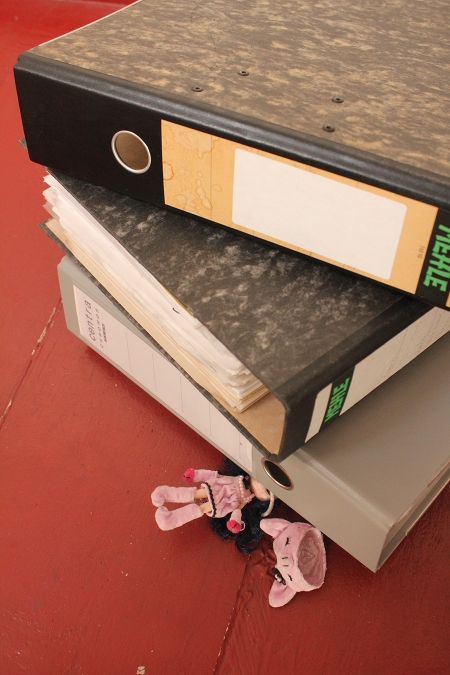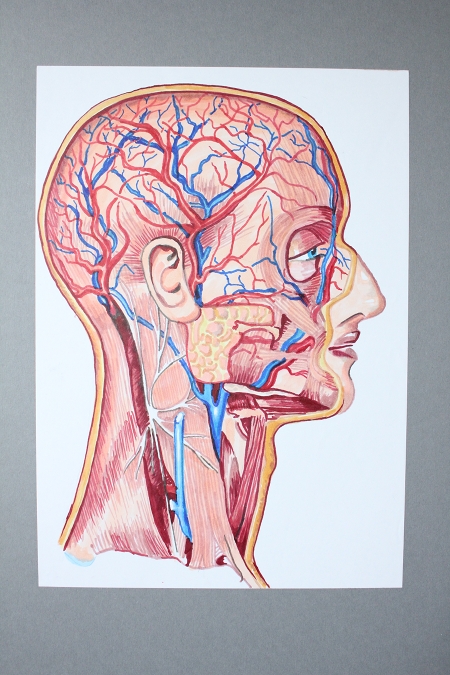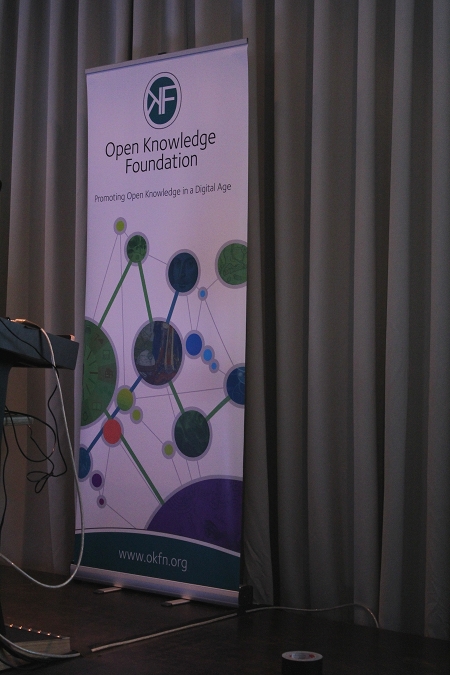Archive for the 'communication' Category
Saturday, November 26th, 2011

“Verwerflicht auf Nachschattengewächs”, artwork by Pestikid.
Unfortunately it is still unclear what will happen to my laptop, so I have still restricted access to my little personal archive. Hence I thought I may post quickly some eye candy, which is not from the archive. The above artwork is playing a bit with scientific paradigms as it calls the above plant a Nachschattengewächs (a plant which grows after its shadow in a “reprobated light”, which is a wordplay with the word Nachtschattengewächs, which is an interesting word itself, as it can be interpreted as describing plants in “night shadows”).*
*It should be pointed out that the above plant is no Nachtschattengewächs but a dried Hagrose.
posted by nad | berlin, communication, procrastination | No Comments »
Tuesday, November 1st, 2011

bye, bye THISYouKNOWmustNOTbemaned***
Unfortunately on Oct. 1st some countries signed the socalled Anti-Counterfeiting Trade Agreement (ACTA). The European Union may eventually join in. The agreement is rather problematic.
(more…)
posted by nad | communication, economy, procrastination, trips | No Comments »
Monday, October 10th, 2011

Maggie Koerth-Baker was today blogging about an interesting popular science video in the field of neuroscience. In the video Stanfort professor Robert Sapolsky explains experiments with monkeys which investigate the role of anticipation and dopamine levels.
In the experiments monkeys got a signal upon which they had to perform some task which was then in the turn rewarded. Measurements showed that high levels of dopamine occurred not as some people may suspect after the reward, but before the task – right when the signal was sent out. The experimenters then lowered the rate of getting a reward. It turned out that the monkeys had even higher levels of dopamine when there was only a fifty percent chance of getting a reward. Sapolsky also mentioned that humans seem to take a unique role in this “social engineering” experiments. That is if I understand him right then humans may even keep on working entirely without reward, when tuned “correctly”.
Unfortunately the talk is very, very short and I couldnt find a longer version. There was also no information given on how important the “rewards” were to the monkeys. Likewise I would have liked to hear something about the rapidity of lowering the reward with respect to the levels. That is I had suspected in this blogpost that it may not only be the dopamine level per se which appears to be important but the rate of change (and eventually the form of the rate of change) of the dopamine level which may be important (as this may eventually even lead to inhibiting the activation of the nucleus acumbens). That is I could imagine that e.g. lowering the reward levels too much or too fast, or to change the levels too often may result in different results than the ones given in the video.
Some “real life social engineering occurences” may point into that direction.
posted by nad | communication, perception | 3 Comments »
Wednesday, August 17th, 2011

“HirniKoppic”, Copic Markers on paper, by artist “nettwürg” on the occasion of the rumors about the possibility of closing the Medizinhistorisches Museum (Berlin Medical Historical Museum) of the Charité.
Using Digital Holographic Microscopy (DHM) researchers of EPFL gathered quite some interesting images from inside the brain:
->Holograms Reveal Brain’s Inner Workings.
When do we get to see brain images from image imaginations? and when can others recognize these?
posted by nad | 3d, bio, communication, computer vision, nano, perception, software, visualization | No Comments »
Tuesday, July 19th, 2011
The Theseus program is a german research project (sofar funded for five years). It is kind of a bit on the side of the already mentioned Quaero project. Theseus is amongst others concerned with the development of aspects of the semantic web. Moreover it is especially concerned with technology in connection to business applications and services. So for example companies like antibodies-online may look out for unified descriptions of their products* etc. The Theseus project hosts the socalled TEXO lab, which offers now a prize for an app written in USDL (which seems to be some variant of WSDL, i.e. a metalanguage, which describes entities of web services). The website of the prize is in german, but thanks to google-translate (which still works for this site) one can get an easy translate of the site. This may enhance the global competition for a posh enterprise app.
*as a side remark: eventually this could also be useful for flutracking
posted by nad | communication, economy, procrastination, software, trips | No Comments »
Wednesday, July 6th, 2011

My talk at the open knowledge confence was well perceived, however on the other hand there were not so many participants listening to my talk. In general it seemed to me that games were not (yet) in the focus of the open knowledge community. That is tere were not so many talks involving games at the conference. Nevertheless there were enough issues of importance and the conference was fun.
The slides of my talk are currently too big for upload, so I only uploaded a newer version of the article.
update (130711): The slides are available now at slideshare.net:
Talk: “Testing new toy economies/political structures in MMOGs” at slideshare.net
posted by nad | art and design, berlin, climate, communication, economy, environment, games, math, physics, procrastination, software, trips | 4 Comments »
Saturday, July 2nd, 2011
A recent product description at Inhabitat. Read about: Miss Maple – the pendant lamp by Elisa Strozyk and the tile-tale of cozy Sherlock Home.
posted by nad | art and design, berlin, communication, math, Uncategorized | 2 Comments »
Wednesday, June 29th, 2011
posted by nad | art and design, berlin, communication, economy, environment, games, math, physics, software, visualization | No Comments »
Saturday, June 25th, 2011
I am currently writing some product descriptions for the US based (sustainable) design/green architecture blog Inhabitat, here is a link to the first description -> a lamp by Miriam Aust.
posted by nad | 3d, art and design, communication, environment | No Comments »
Thursday, May 26th, 2011
An upload of an updated version of the article draft “New economic schemes in games” is at the corresponding randform blogpost.
posted by nad | art and design, communication, economy, environment, games, math, perception, physics, procrastination, software, trips, visualization | No Comments »




